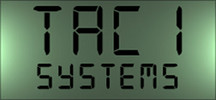Battery Terminology & Info
|
Nickel Cadmium (Ni-Cd)
|
12 Months - Covers any manufacturing defect, workmanship, 80% of the rated capacity, failure of any electrical component and case damage caused during normal usage. |
|
Nickel-Metal Hydride (Ni-MH)
|
24 Months - Covers any manufacturing defect, workmanship, 80% of the rated capacity, failure of any electrical component and case damage caused during normal usage. |
|
Lithium-Ion (Li-Ion)
|
24 Months - Covers any manufacturing defect, workmanship, 80% of the rated capacity, failure of any electrical component and case damage caused during normal usage. |
|
Lithium-Ion Polymer (Li-Po, Li-Poly)
|
24 Months - Covers any manufacturing defect, workmanship, 80% of the rated capacity, failure of any electrical component and case damage caused during normal usage. |
|
Primary Lithium Packs (Non-Rechargeable)
|
Guaranteed to perform as specified upon delivery and for 3 years after.
|
|
Alkaline Clamshells
|
12 months for workmanship and case damage through normal use.
|
|
Battery Eliminators
|
12 months for workmanship and case damage through normal use.
|
Battery Terminology Explained:
Rechargeable Battery
A battery utilizing rechargeable cells.
Primary Battery
A battery utilizing non-rechargeable cells. Typically, not reusable
Clamshell
A reusable battery cartridge utilizing primary (non-rechargeable) cells, typically AA alkaline cells.
Battery Eliminator
A battery case containing no cells that utilizes a cord (Typically 12 VDC cigarette lighter style) to connect to an external power supply.
Milliampere-hour (mAh)
The rated capacity of a battery. The higher the mAh rating, the higher the capacity and therefore the longer the battery will run a device on a full charge.
Battery Chemistries:
Nickel Cadmium (Ni-Cd)
Advantages:
• Fast and simple charging even after prolonged storage
• High number of charge/discharge cycles; provides over 1,000 charge/discharge cycles with proper maintenance
• Good load performance; rugged and forgiving if abused
• Long shelf life; can be stored in a discharged state
• Simple storage and transportation; not subject to regulatory control
• Good low-temperature performance
• Economically priced; Ni-Cd is the lowest in terms of cost per cycle
• Available in a wide range of sizes and performance options
Disadvantages:
• Relatively low specific energy compared with newer systems
• Memory effect; needs periodic full discharges
• Environmentally unfriendly; cadmium is a toxic metal and cannot be disposed of in landfills
• High self-discharge; needs recharging after storage
Nickel-Metal Hydride (Ni-MH)
Advantages:
• 30–40 percent higher capacity than a standard Ni-Cd
• Less prone to memory than Ni-Cd
• Simple storage and transportation; not subject to regulatory control
• Environmentally friendly; contains only mild toxins
• Nickel content makes recycling profitable
• Economically priced; Ni-MH is the lowest in terms of cost per Ah
Disadvantages:
• Limited service life; deep discharge reduces service life
• Performance degrades if stored at elevated temperatures; should be stored in a cool place at about 40 percent state-of-charge
Lithium-Ion (Li-Ion)
Advantages:
• High energy density
• Relatively low self-discharge; less than half that of NiCd and NiMH
• Low maintenance. No periodic discharge is needed; no memory.
• Light Weight
Disadvantages:
• Requires protection circuit to limit voltage and current
• Subject to aging, even if not in use (aging occurs with all batteries and modern Li-ion systems have a similar life span to other chemistries)
• Transportation regulations when shipping in larger quantities
Lithium-Ion Polymer (Li-Po, Li-Poly)
Advantages:
• Higher energy density than even Li-Ion
• Relatively low self-discharge; less than half that of NiCd and NiMH
• Low maintenance. No periodic discharge is needed; no memory.
• Extremely Light Weight
Disadvantages:
• Requires protection circuit to limit voltage and current
• Subject to aging, even if not in use (aging occurs with all batteries and modern Li-ion systems have a similar life span to other chemistries)
• Transportation regulations when shipping in larger quantities
